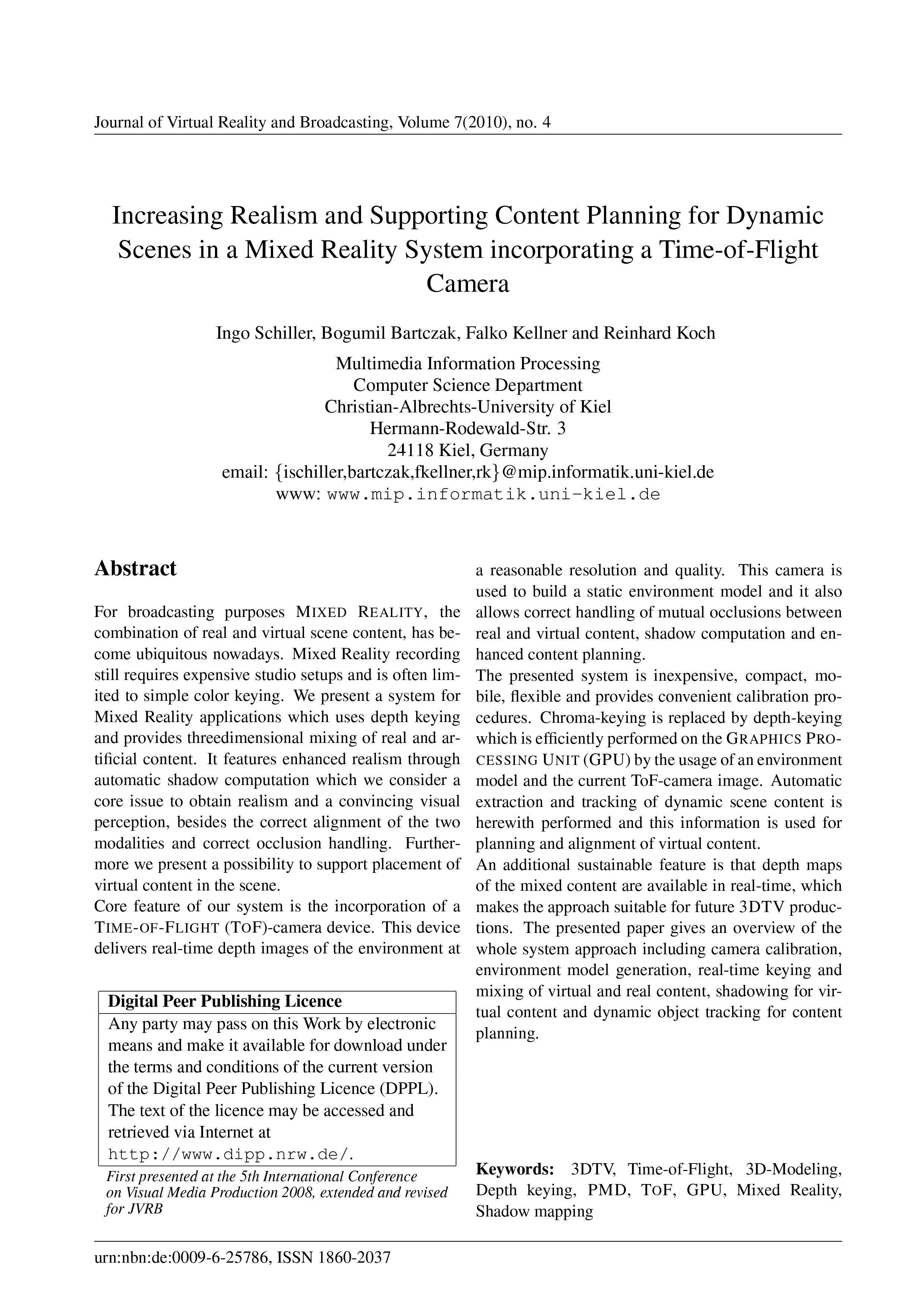Increasing Realism and Supporting Content Planning for Dynamic Scenes in a Mixed Reality System incorporating a Time-of-Flight Camera
DOI:
https://doi.org/10.20385/1860-2037/7.2010.4Keywords:
3D-Modeling, 3DTV, Depth Keying, GPU, Mixed Reality, PMD, Shadow Mapping, TOF, Time-of-FlightAbstract
For broadcasting purposes MIXED REALITY, the combination of real and virtual scene content, has become ubiquitous nowadays. Mixed Reality recording still requires expensive studio setups and is often limited to simple color keying. We present a system for Mixed Reality applications which uses depth keying and provides threedimensional mixing of real and artificial content. It features enhanced realism through automatic shadow computation which we consider a core issue to obtain realism and a convincing visual perception, besides the correct alignment of the two modalities and correct occlusion handling. Furthermore we present a possibility to support placement of virtual content in the scene. Core feature of our system is the incorporation of a TIME-OF-FLIGHT (TOF)-camera device. This device delivers real-time depth images of the environment at a reasonable resolution and quality. This camera is used to build a static environment model and it also allows correct handling of mutual occlusions between real and virtual content, shadow computation and enhanced content planning. The presented system is inexpensive, compact, mobile, flexible and provides convenient calibration procedures. Chroma-keying is replaced by depth-keying which is efficiently performed on the GRAPHICS PROCESSING UNIT (GPU) by the usage of an environment model and the current ToF-camera image. Automatic extraction and tracking of dynamic scene content is herewith performed and this information is used for planning and alignment of virtual content. An additional sustainable feature is that depth maps of the mixed content are available in real-time, which makes the approach suitable for future 3DTV productions. The presented paper gives an overview of the whole system approach including camera calibration, environment model generation, real-time keying and mixing of virtual and real content, shadowing for virtual content and dynamic object tracking for content planning.
Published
2010-07-19
Issue
Section
CVMP 2008





